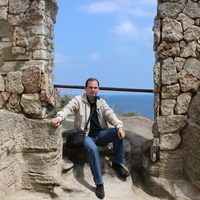Published in: Sven Kalmring · Lukas Werther (eds.), HÄFEN IM 1. MILLENNIUM AD. STANDORTBEDINGUNGEN, ENTWICKLUNGSMODELLE UND ÖKONOMISCHE VERNETZUNG. Mainz 2017, see:
https://shop.rgzm.de/de/wissenschaftliche-reihen/rgzm-tagungen/haefen-1-millennium-ad (in German)
Embedding certain harbors into a large-scale system of logistics could illustrate the peculiarities and similarities
between local and empire-wide economic patterns. Such kind of methodology also helps us to find an explanation
for the existing differences. Tracing the divergences in the distribution of Late Antique pottery in Butrint, Durrës and
Shkodër leads to the conclusion that Durrës and Shkodër belonged to a transport cluster that covers the Adriatic
Sea and Northern Epirus. Butrint on the other hand belongs to another cluster comprising the northwestern areas of
Central Greece, Northern Peloponnese and the Ionian Sea. The distribution of coins minted in Syracuse from the 7th
to 9th century and found during excavations in Butrint underlines the importance of the sea route Sicily – Southern
Italy – the Ionian Sea – the Aegean and corresponds to the ORBIS Model and the data about the networks of the
kommerkiarioi. The findings of Glazed White Ware I produced in Constantinople in various Balkan settlements such
as Butrint, Debeltos and Anchialos demonstrate the networks maintained by the capital. The different types of cluster
dealing with connections and communication via sea routes offered the base for the reestablishment of trade networks
in the Mediterranean since the 9th century. As Michael McCormick states: »by 800, multiple circuits were connecting
again, linking the growing agrarian economies and political societies of Western Europe to each other, and back to
the Middle East.« This process of reintegration of local maritime networks in the economic system of the High Middle
Ages represents one of the main objectives of the SPP 1630.
